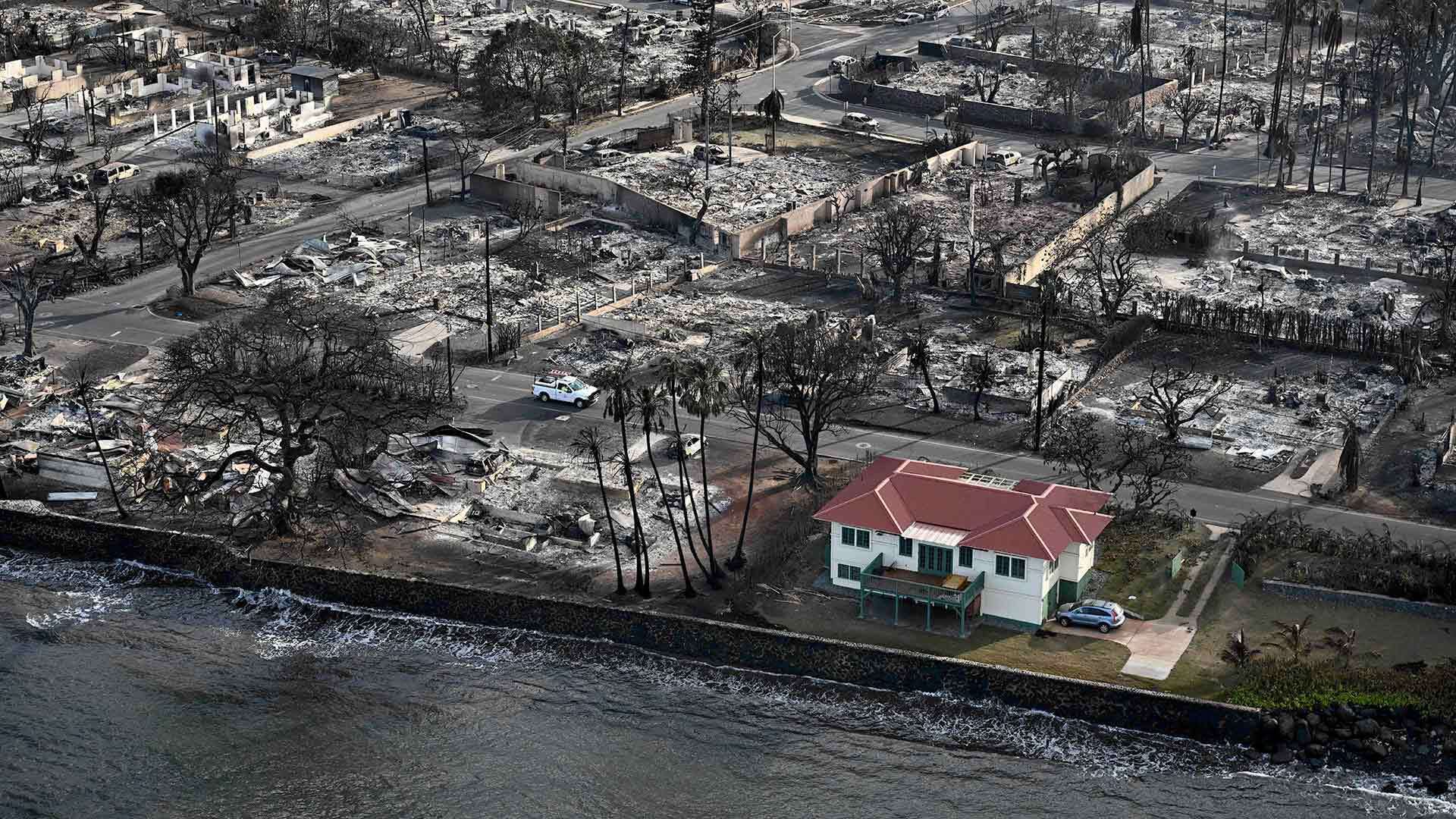- February 02, 2024
- By Daniela Benites
The wind-driven blazes that ravaged the Hawaiian island of Maui last August killed 100 people, making it the third-deadliest U.S. wildfire, and razed the historic beach town of Lahaina—almost.
After the embers died down, a University of Maryland researcher looked at images and data depicting the $4 billion to $6 billion in damage and wondered about the landscape that remained.
“Why didn’t some of these buildings burn, when most of the surrounding structures were completely destroyed?” said Assistant Professor Shuna Ni in the Department of Fire Protection Engineering.
Now, funded by a $197,000 grant from the National Science Foundation, Ni will study the few buildings that survived an inferno that current wildfire modeling software predicts should have leveled everything in its path. The one-year study could help boost such modeling capabilities while leading to new protective technologies for structures.
Ni and the research team, including Professor Arnaud Trouvé, fire protection engineering chair, and Professor Stanislav Stoliarov will build a database to carry out an enhanced simulation of the fire as it swept over two Lahaina buildings: one damaged, and one left intact.
They’ll look at details such as the buildings’ architecture and construction, age and condition, the nearby vegetation distribution, heat exposure during the fire and other factors necessary to build more accurate prediction models.
Their goal is models that capture individual structure losses at the wildland-urban interface (WUI) that would unleash a wealth of information on conventional fire risk assessment techniques, ultimately developing better solutions to protect neighborhoods in affected areas.
Conventional modeling tools to assess WUI areas are focused on predicting damage at the community scale, and struggle to encompass individual property losses. Computational fluid dynamics-based tools, such as the Fire Dynamics Simulator—a program developed by the National Institute of Standards and Technology to study the fluid dynamics of fires—have the capacity to offer these missing insights, but are limited due to a lack of data to power the model and validate its feasibility. To bridge that gap, Ni will develop a comprehensive database aiming to enhance the accuracy of these simulations in fire spread and structure burning at the individual property level.
The UMD team has not been allowed access to the fire area; it will rely on other sources of information as it develops those high-fidelity models, including local governments, journal and newspaper articles about the disaster, focus groups with locals, and data-sharing with the UL Fire Safety Research Institute and the Insurance Institute for Business and Home Safety, which have researchers on the ground in Hawaii.
“Our results of the developing simulation model could provide a better idea about how structures burn in a probabilistic way, rather than just assuming that they will burn if they are on the fire’s pathway,” said Ni.
Topics
Research